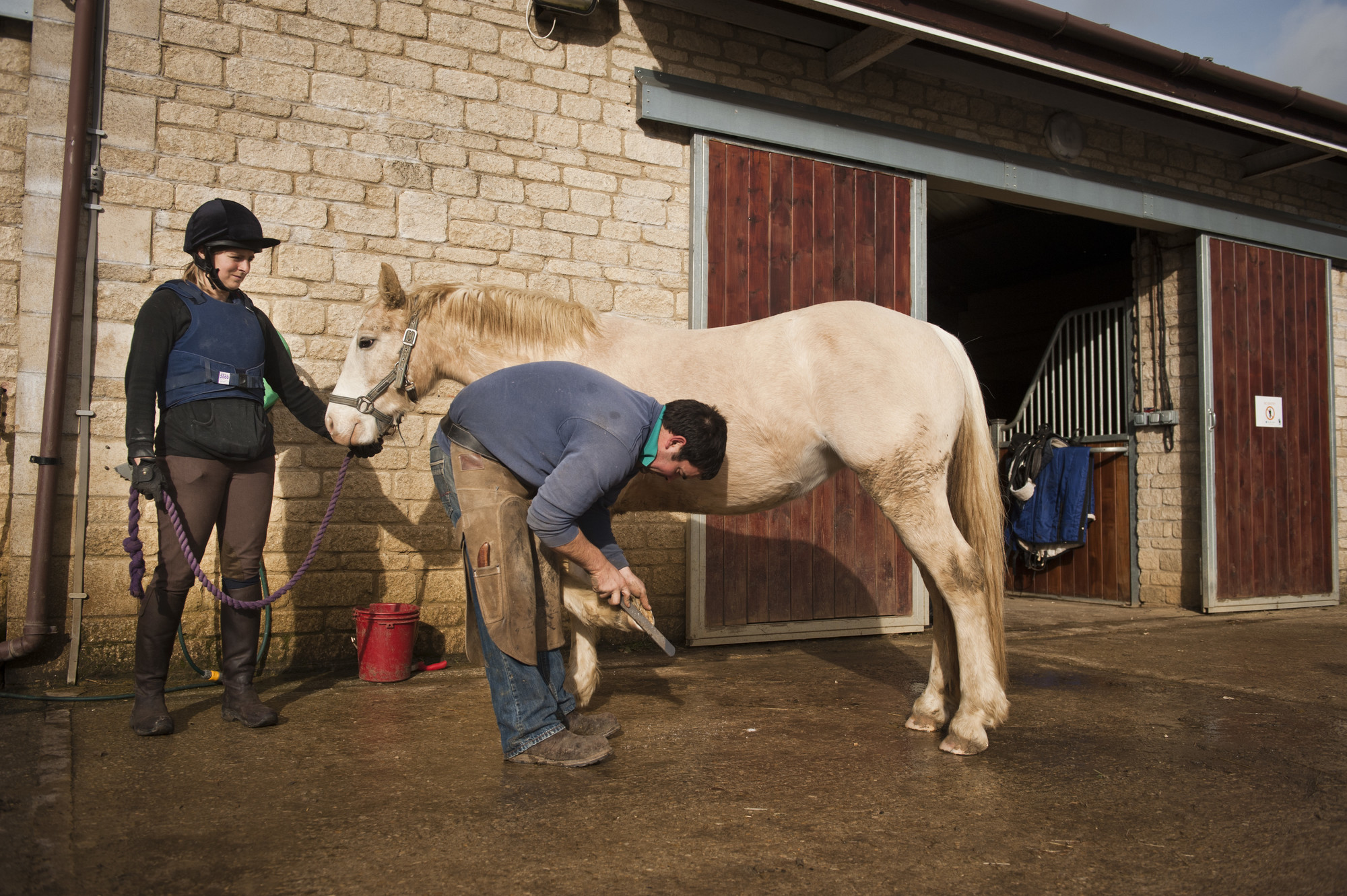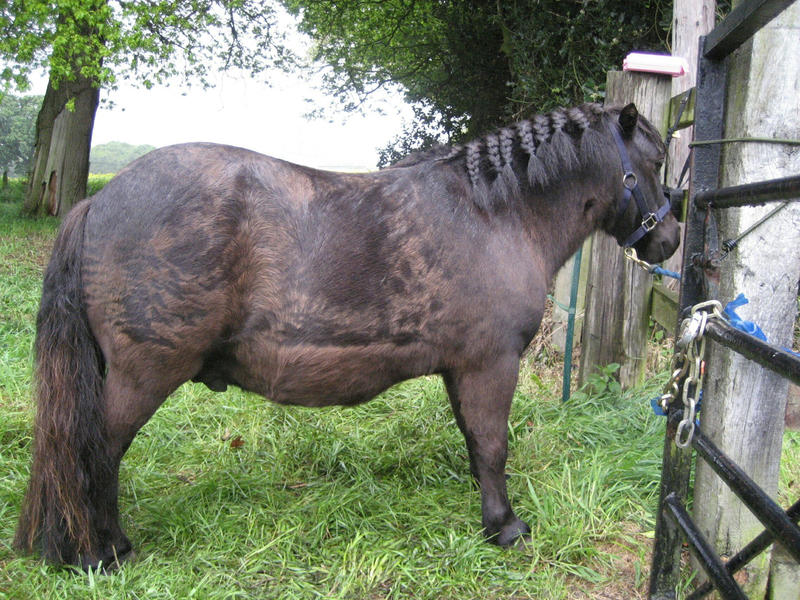
Common problems for horses hoofs
There are a number of injuries and diseases that can occur in your horse’s hoofs.
‘No foot, no horse’ is an old but true statement. Your horse’s hooves are complex, weight-bearing structures – looking after their hooves is incredibly important to keep them healthy, prevent any problems, and keep the hooves in optimum condition.
Daily hoof care, such as picking out and checking your horse's feet, can help you to spot signs of injury or disease before they worsen. But you'll also need to stay on top of regular farriery to keep your horse's hooves balance d and healthy.
Laminitis
Laminitis is the inflammation of the laminae – the inner sensitive tissues of the hoof. It’s an extremely painful and serious condition. When the laminae are damaged, the pedal bone may begin to rotate.
Laminitis can affect any of the feet but is more common in the front feet. Any horse can be affected by laminitis at any time of the year . It can be caused by several factors, but one of the most common reasons is an overload of soluble carbohydrates in the digestive system .
Symptoms include:
- leaning back onto the hind feet
- reluctance to move
- walking heel to toe or shuffling in both front feet
- increased digital pulse
Treating laminitis
Call the vet immediately. Remove your horse from grass and take them into a deep bed (preferably of shavings) that will cushion their feet, where they can lie down if they wish to. Ensure that you carefully follow the treatment plan given by your vet.
To help prevent laminitis, a properly formulated high fibre diet is necessary with strict weight control and regular farrier attention.
Bruised soles
Bruised soles are caused by an injury to the sole of the foot, usually by standing on a hard object or concussion from hard ground. They can also be due to poor trimming or shoeing.
Symptoms include:
- acute lameness that gets progressively worse – usually more prominent in one foot
- red or bruised areas seen on the sole
- reaction to pressure on the sole due to pain
Treating bruised soles
Bruised soles can be treated by restricting movement and keeping your horse on a soft surface until they're sound. A deep bed in a stable, sand school or woodchip area is best. If your horse is in severe pain, call the vet who may prescribe anti-inflammatory drugs and check for any infection.
Thrush
Thrush in horses is a nasty infection of the central and collateral grooves of the frog. Bacteria attack the softened tissues of the frog, causing it to rot away.
Thrush is caused by continuous exposure to a damp environment such as stabling for prolonged periods on soiled bedding, or constantly damp pasture. It can also be caused by poor foot conformation (especially of the frog), or poor foot care such as not picking out and cleaning the feet regularly.
If left untreated, the infection can move to the sensitive, internal structures of the foot.
Symptoms include:
- a black, foul smelling discharge around the frog
- the frog may feel soft and look irregular in shape
There may be no obvious signs of lameness unless the condition has become severe.
Treating thrush
Thrush is treated by firstly identifying the underlying cause and removing it. The horse should be moved to a clean, dry environment and the feet cleaned daily. Treatment may need to be carried out by a vet or farrier, who may remove any damaged tissue. They will also advise on follow up care – which may include the application of an antibiotic solution or spray.
To prevent thrush, good foot hygiene is essential. Pick your horse’s feet out and clean them daily. Make sure that there is a dry area in the field, for example hard standing, if the horse is out all the time. Ensure bedding in the stable or shelter is kept clean and dry.
Abscess/infections in the foot
An abscess is caused by puncture wounds, seedy toe or bruising. It's one of the most common causes of lameness.
Symptoms include:
- extreme lameness due to the inflammation in the affected foot, increasing pressure against the hoof wall, causing pain
- an increased digital pulse in the affected hoof
- reaction to pressure on the infected site due to pain
- your horse may be pointing their toe when standing to avoid bearing weight on the affected foot
Treating an abscess
Call the vet, as the infection (pus) should be released from the foot by digging out the infected area. This can also be done by a farrier.
The foot will then need to be tubbed or poulticed to draw out the rest of the infection. If left without treatment, the leg can begin to swell and the infection can spread through the foot and burst out of the coronary band.
In extreme cases the vet may prescribe antibiotics alongside practical procedures. You should ensure that your horse is protected against tetanus, as puncture wounds are an ideal way for tetanus to enter the body.
Important
A vet should see all puncture wounds to the foot because if they are deep enough, they can infect the pedal or navicular bone. This is a serious condition and needs surgical attention. It can cause damage to sensitive, internal structures including tendons and could cause permanent lameness.
Seedy toe (white line disease)
Seedy toe is the separation of the hoof wall or laminae at the white line. It usually starts at the toe and gradually progresses up the hoof wall. The hole becomes filled with white, dead material.
White line disease normally occurs when the toes are allowed to become too long, but it can also be a result of laminitis or concussion from hard ground.
This condition needs to be managed by your vet and regular correct trimming by a farrier.
Nail bind/prick
Nail bind is caused by a farrier putting a nail too close to the sensitive part of the foot. Nail prick is when the nail pierces this part of the foot.
Symptoms include lameness after shoeing, either immediately or up to a couple of days later.
Treating nail bind/prick
To treat it, the farrier needs to remove the nail and the foot should be tubbed or poulticed as with a foot infection. Call the vet if lameness continues or if the farrier advises it. Check that your horse's tetanus vaccinations are up to date.
Sand/grass cracks
A sand crack starts at the coronet band and works down, whereas a grass crack runs from the ground towards the coronet band. Both are caused by poor foot conformation or condition, poor or irregular farrier attention or an injury.
Treating sand/grass cracks
The farrier can treat the crack by stopping it from spreading. This is done by marking a groove in the hoof wall above or below the crack, or by putting clips around the start of a grass crack. With regular correct farriery, the cracks should grow out.
To prevent cracks ensure regular, correct farriery. A dietary supplement of biotin can also promote good hoof condition and growth.
Treating the hoof
Depending on the cause of injury, there are a couple of ways you can treat your horse's hoof at home.
Important
You should only poultice or tub your horse's hoof if your vet has advised it as a course of treatment. Always ask your vet to show you how to safely carry out any home treatment.
Hot tubbing
Hot tubbing is standing your horse's foot in a shallow bucket of warm water – a clean rubber feed bowl is suitable. You can add Epsom salts to this if you wish. Make sure to introduce your horse to the water carefully to avoid scaring them.
Tubbing helps to clean the hoof and soften the area, which can encourage an abscess to drain. You can soak your horse's foot for 15 minutes before drying it gently but thoroughly.
Poulticing
A poultice is used to draw out an infection and protect the area from further infection. You can buy ready made poultices, such as Animalintex. These work as antiseptics and can help to draw out any pus.
Poultices can be applied both wet or dry. A wet poultice is better for drawing out fluid, but a dry poultice will still work if the abscess is releasing fluid on its own. Always follow your vet’s guidance when applying a poultice and bandaging your horse.
Page details
Published
• 2 November 2023
Next review
• 2 November 2026






